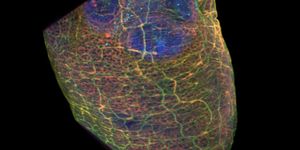How does infrared light affect our skin?
New research published recently in The FASEB Journal reports, at last, the effects of visible and infrared light on our skin. According to the study, UV, visible, and infrared light damages the deeper dermal layer of the skin, meaning we may soon need not only sunscreen but other types of light protection methods!
The research was conducted by scientists at Newcastle University, led by Professor Mark Birch-Machin, a professor of Molecular Dermatology at Newcastle University's Faculty of Medical Sciences. The research suggests that it could be beneficial to protect our skin against all UV, visible, and infrared light for the purposes of anti-aging.
"We protect ourselves from ultraviolet rays in sunlight using sunscreens to prevent sunburn, premature aging and increased risk of skin cancer. However, along with UV, sunlight also contains visible and infrared light. It is important to consider that visible and infrared light may also be contributing to the damage our skin receives from the sun, and that it could be beneficial to protect our skin against these as well when UV is present,” commented Professor Birch-Machin.
This finding, that the effects of visible and infrared light are compounded by the presence of UV light, was novel in the field. Professor Birch-Machin added, “We found that our skin cells are sensitive not only to the single UV, visible and infrared wavelengths but also to their interaction within the sunlight. This means on their own each is fine but when combined the effect is enhanced, like in boxing -- the first blow, the UV, does the major damage and then the smaller jabs, punches two and three, represented by visible and infrared topple the boxer to the floor. Visible and infrared on their own have a small effect on skin damage but their potency is increased dramatically when UV is present."
In conducting the study, the researchers analyzed the damage seen in skin cells from the different kinds of light. They saw that keratinocytes (the top layer of the skin) suffered from UV light while fibroblasts (in the deeper dermal layer) were affected not only by UV but also visible and infrared light. These findings, of course, beg the question of preventative measures.
Whether visible and infrared light puts one at risk for skin cancer is still not clear, however, the researchers hope that the sunscreen industry will consider their findings going forward. Professor Birch-Machin said: "People should not be worried if they are following a good sun-smart lifestyle as recommended by national skin charities. However, this study provides key detailed information to help the commercial sunscreen industry in their ongoing protection strategy offered by sun-creams and by looking at ways to protect our skin from 'complete' solar light."
Sources: The FASEB Journal, Science Daily










